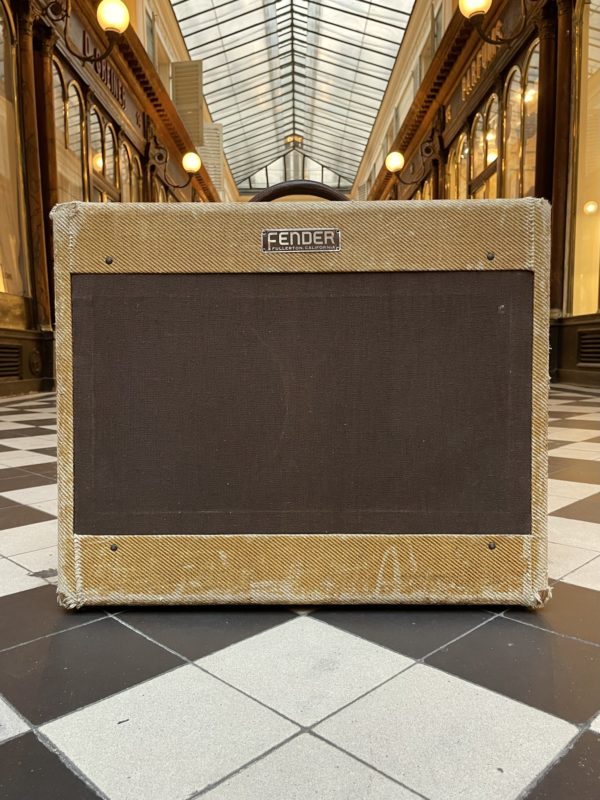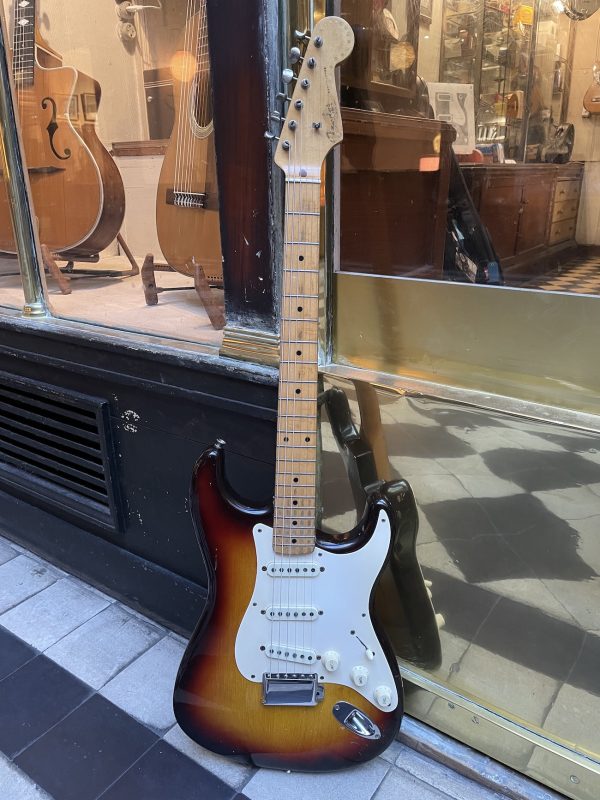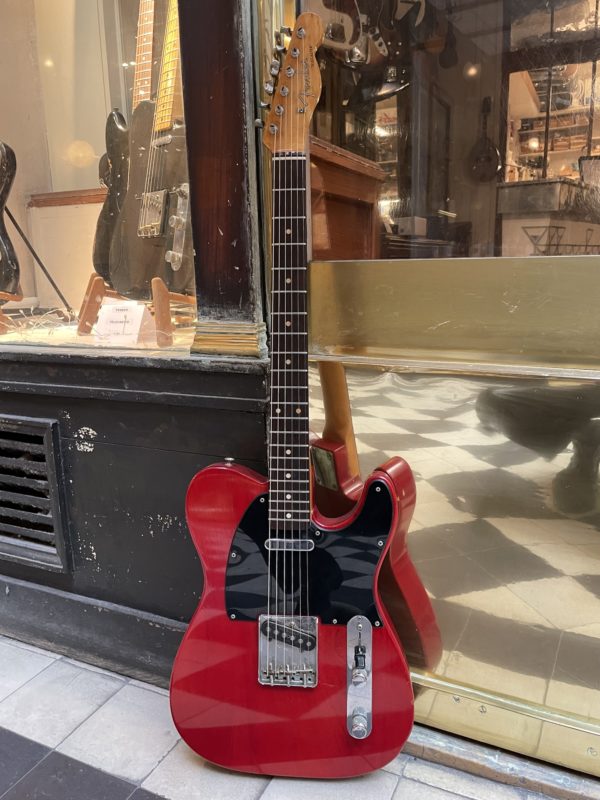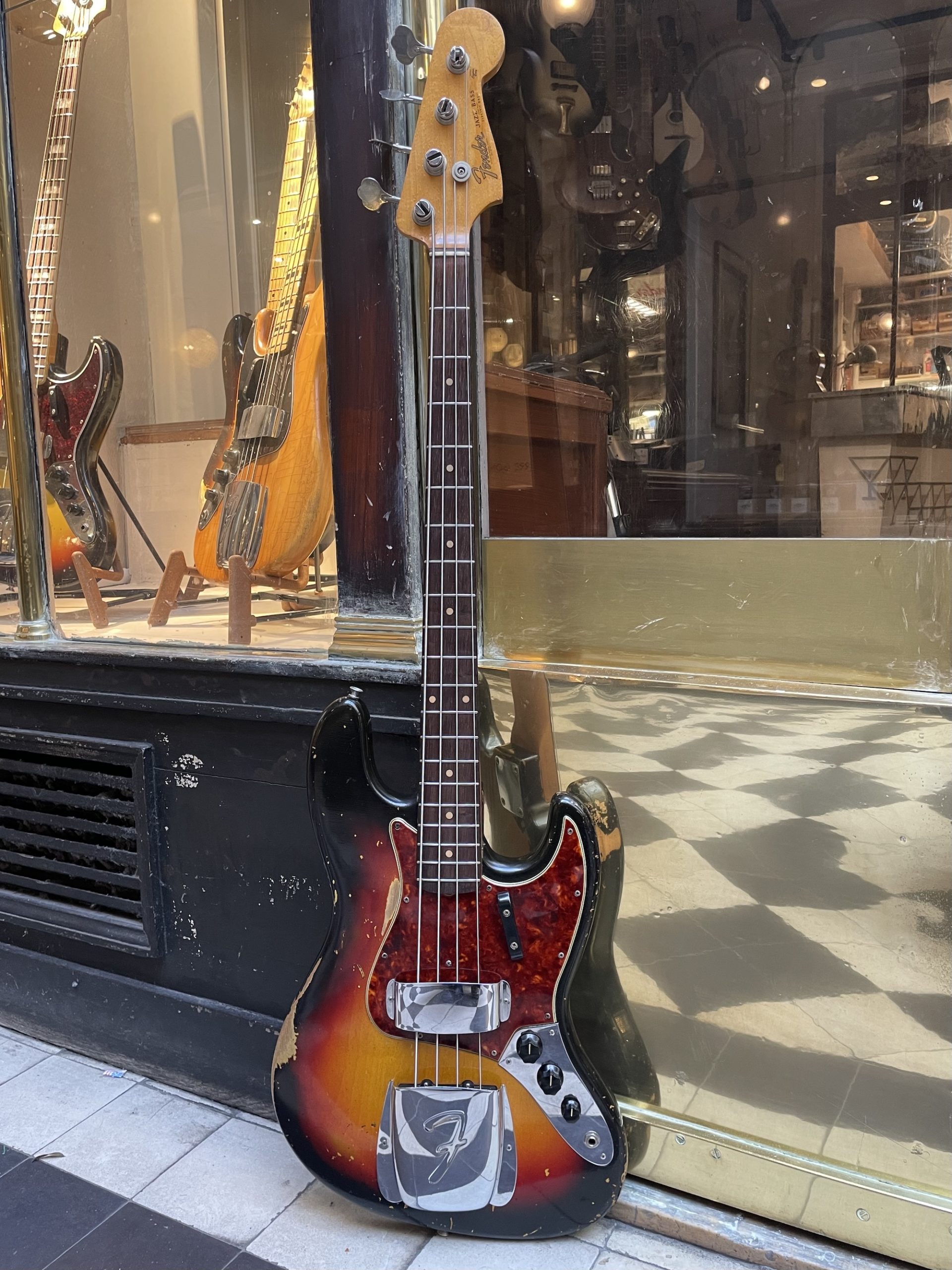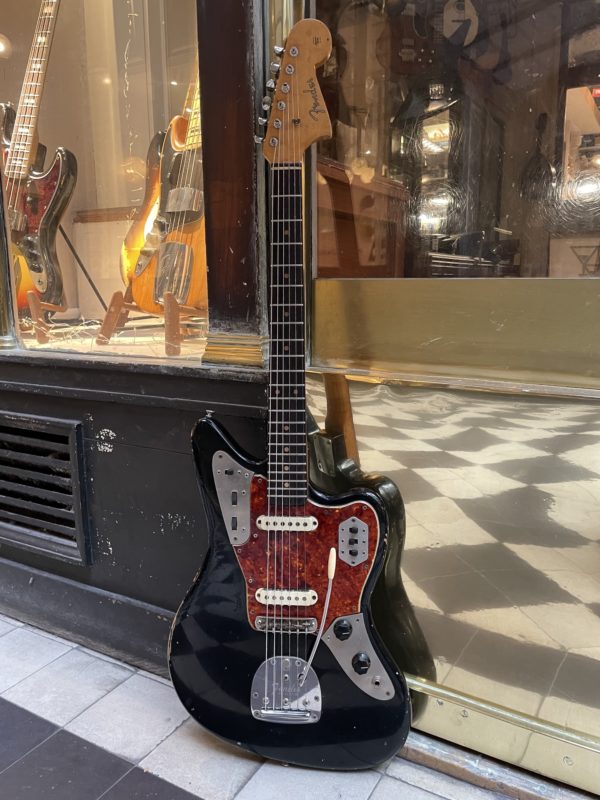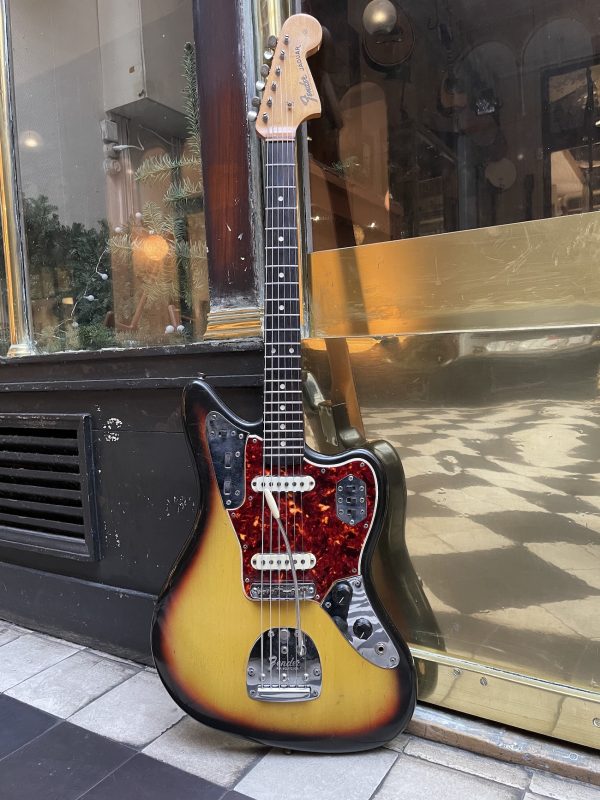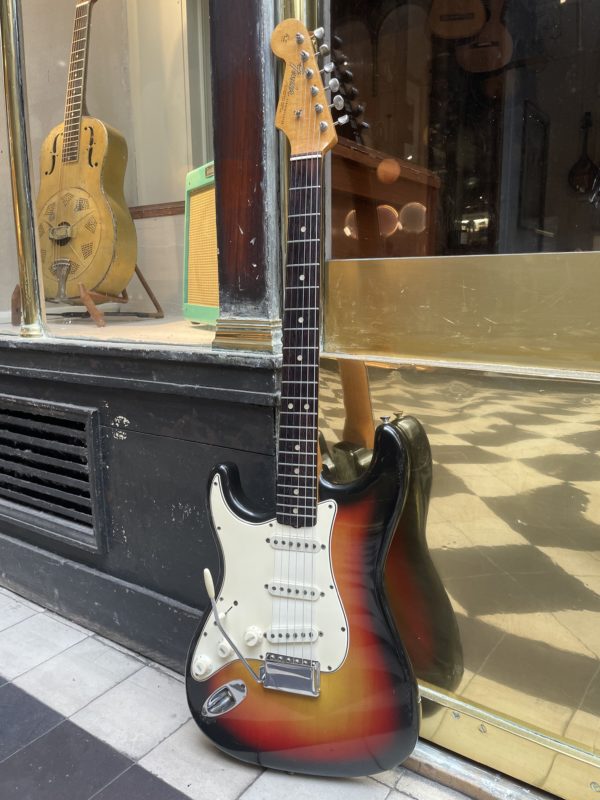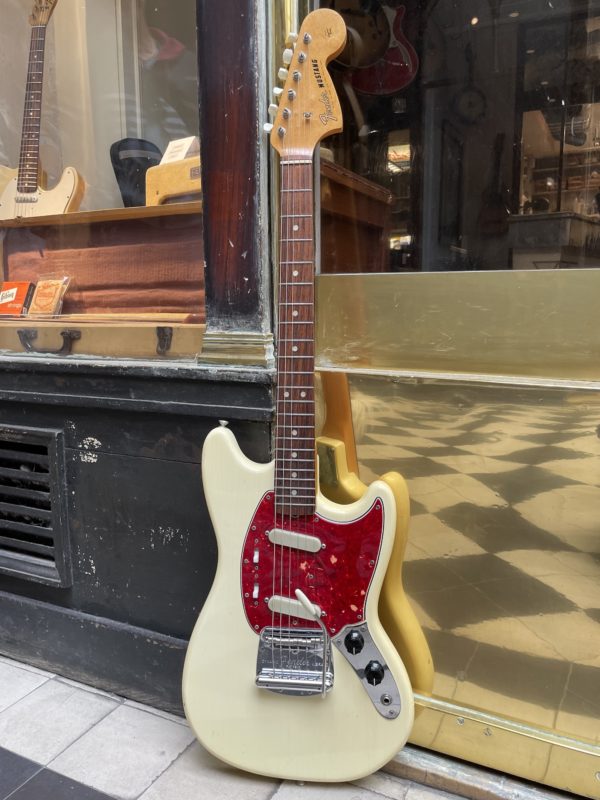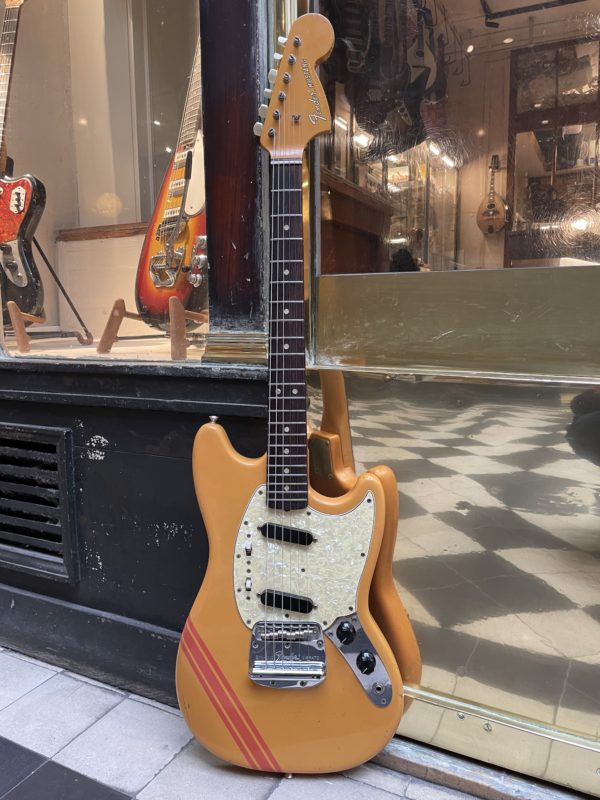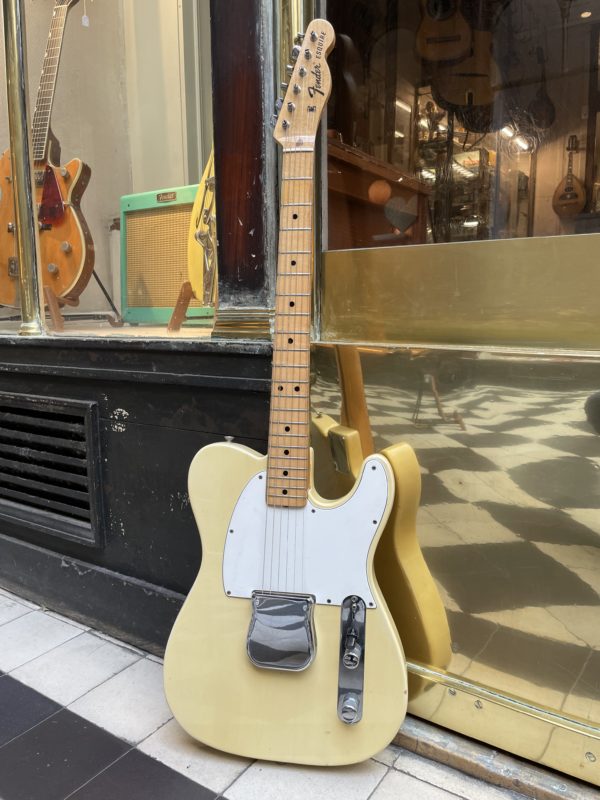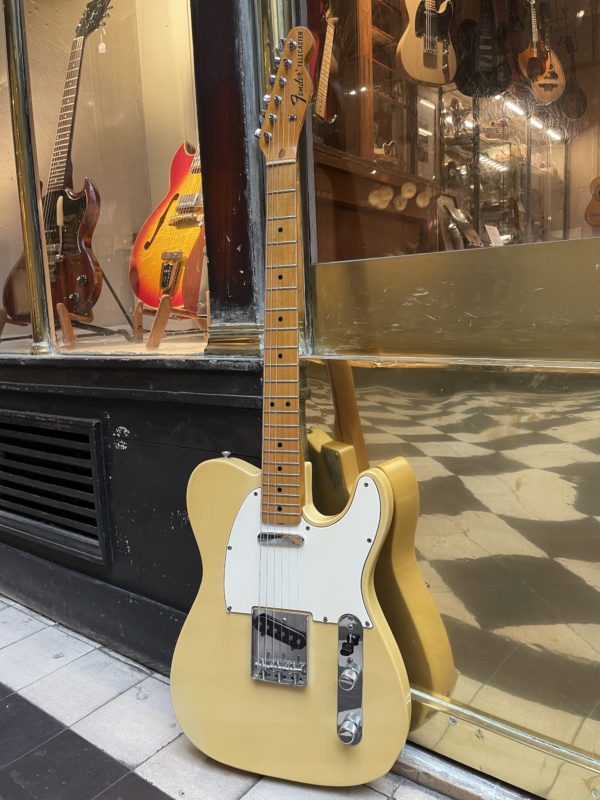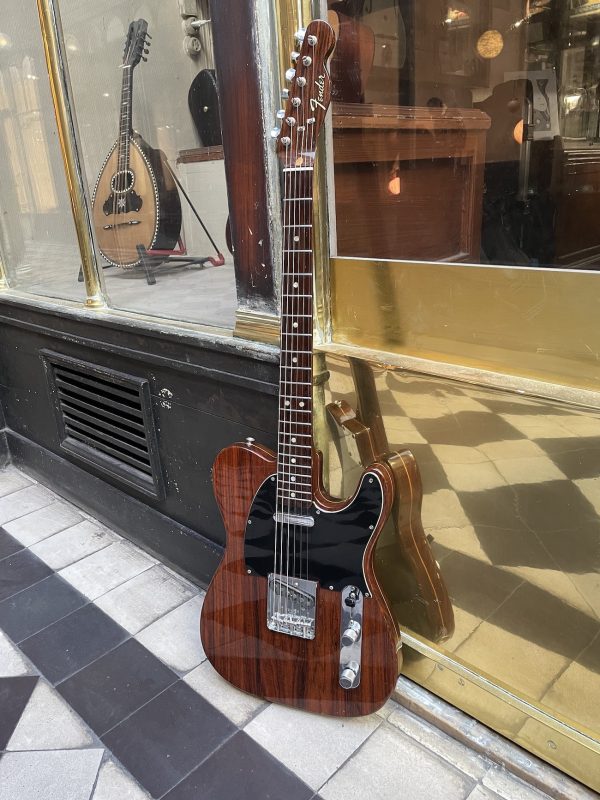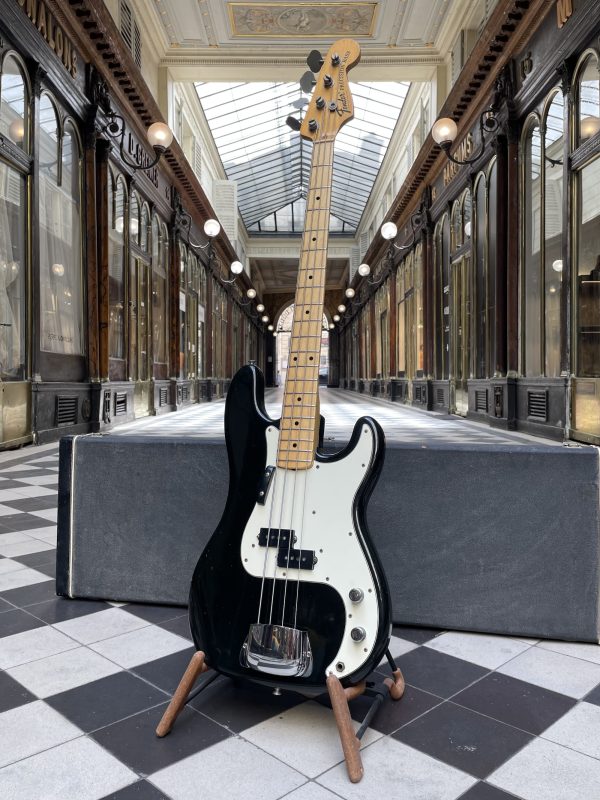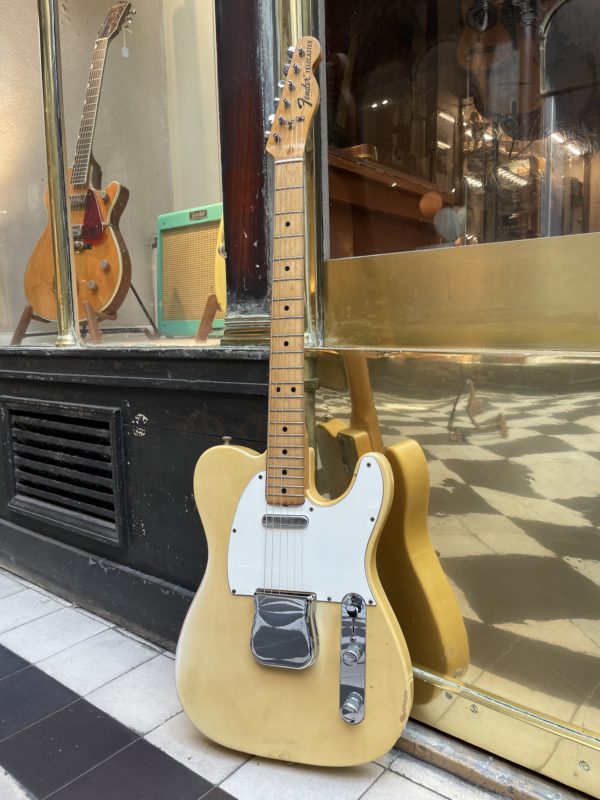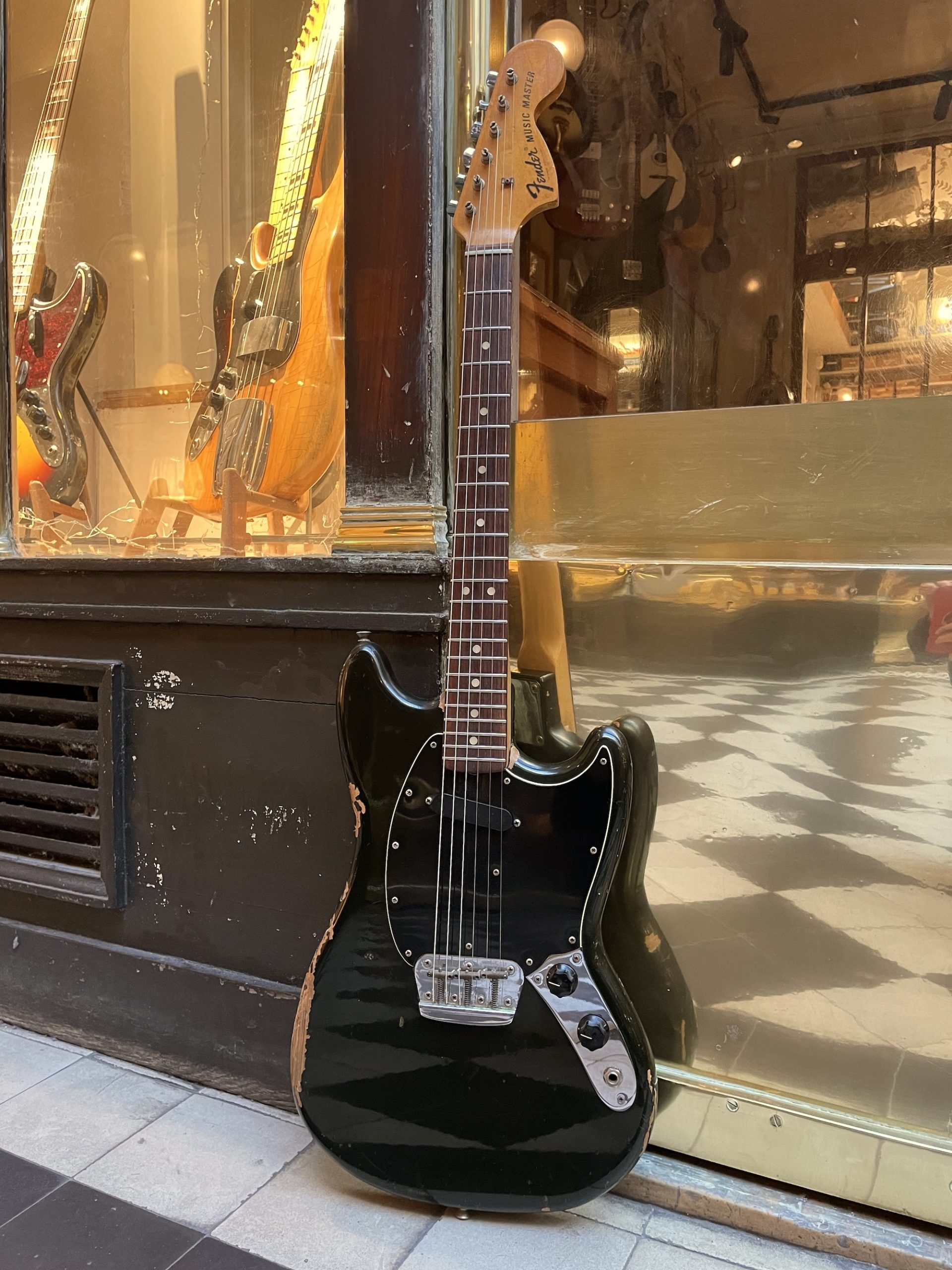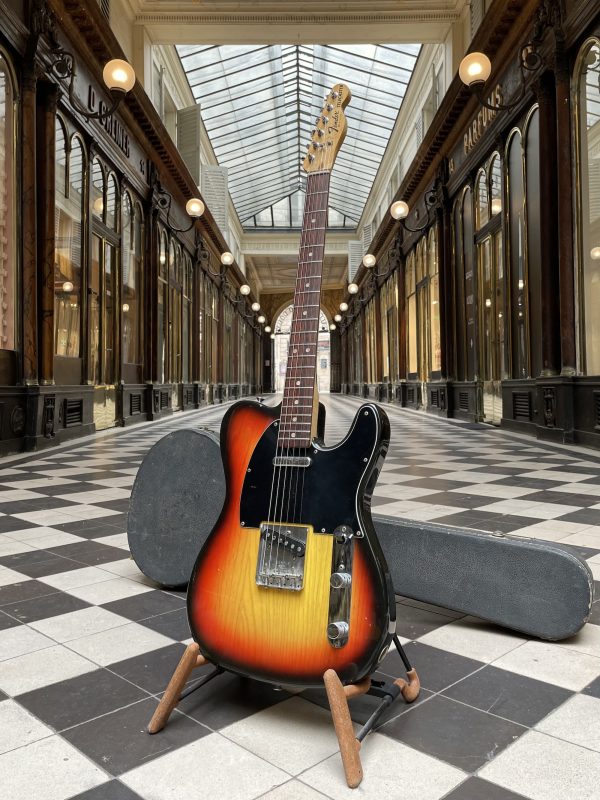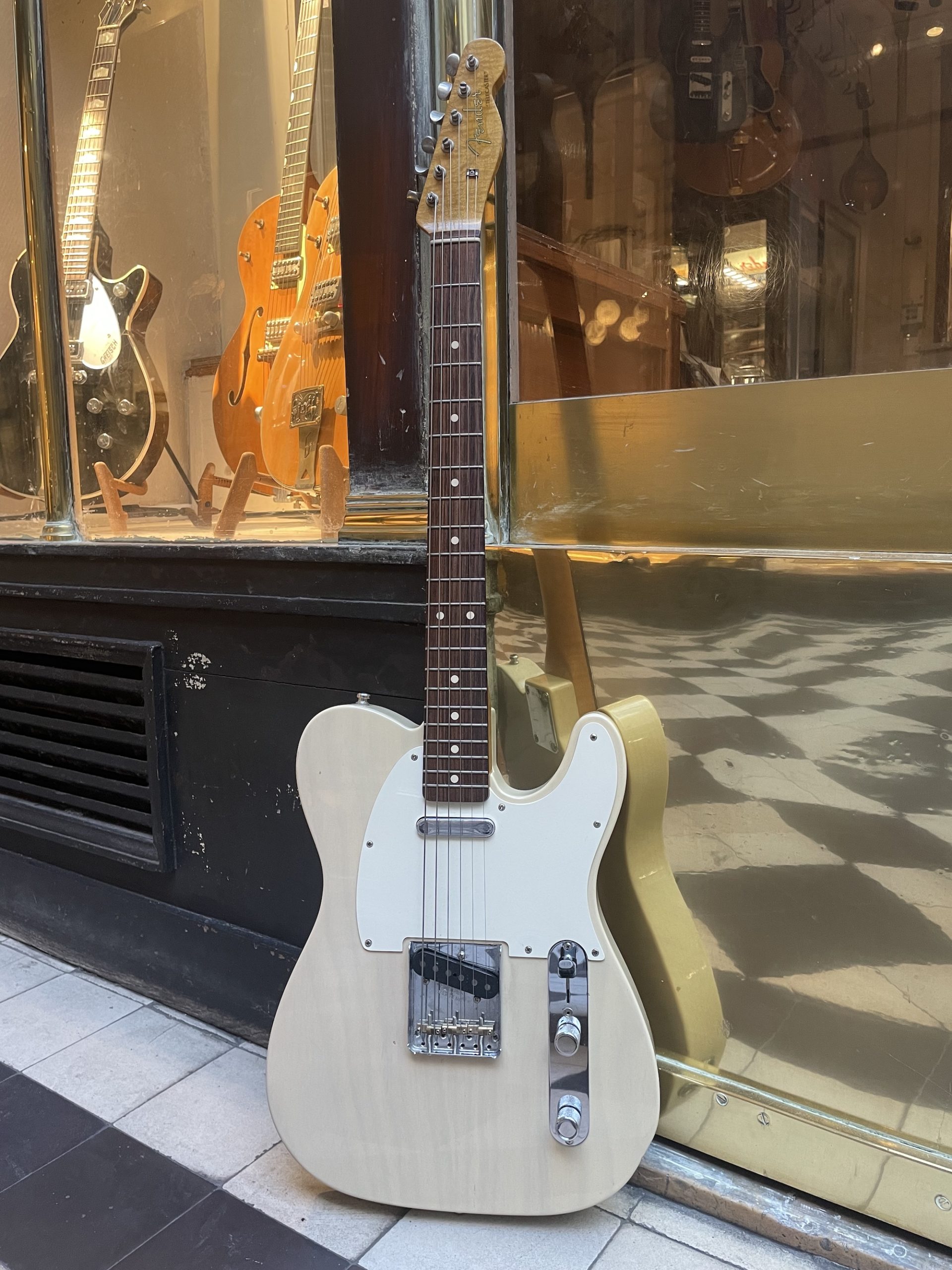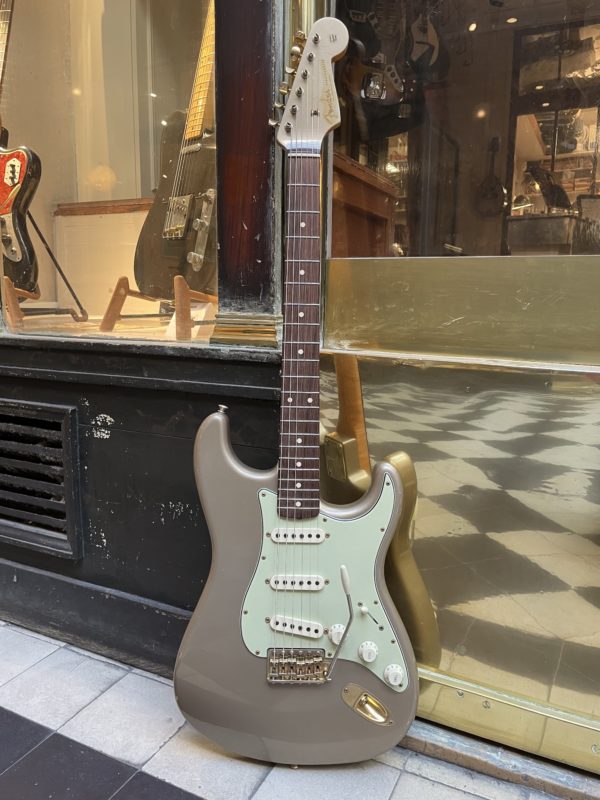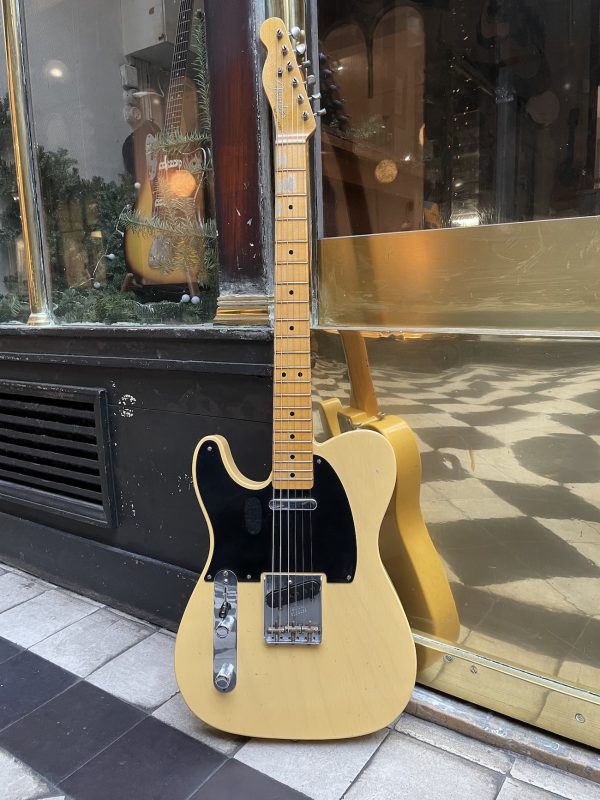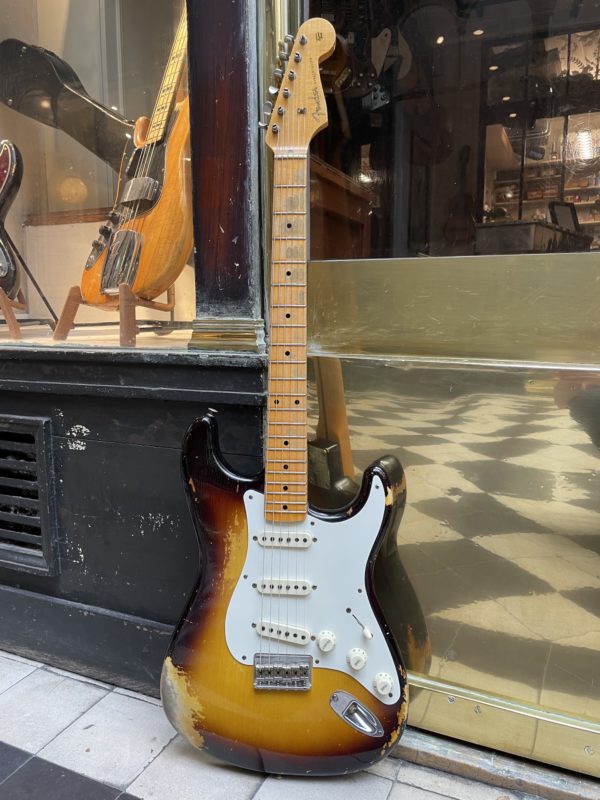Fender
1958 FENDER STRATOCASTER
1971 FENDER TELECASTER ROSEWOOD
Fender
FENDER
History does not repeat itself but it has hiccups and the portrait that can be painted of the creator of the Fender company is not without similarities to that of Orville Gibson (1856-1918). Coming from the rural environment of Fullerton in California, a small town in the Orange County, the young Leo Fender (1909-1991), an accountant by training, was at first just as passionate and curious as his illustrious predecessor. Rather than lutherie and woodworking, his favorite playground is electronics where he excels through the building of radios and sound equipment from adolescence. A saxophonist of maybe unknown talent, he is nonetheless a fervent music lover and his favorite music is, and will always remain exclusively, Western Swing and its brilliant guitarists. The guitar is almost for him an incident of course within the very new Fender’s Radio Service established in 1940. It is on occasion while conducting repair or installation of pickups on instruments that he questions the validity of their design, that he candidly and cardinally questions the ergonomics of the guitar with a true accuracy of appreciation for a man who is not a luthier. It seems that this systematic, even obsessive if not pathological questioning of any manufactured object passing through his hands was the driving force behind his research throughout his life. As proof, his short association with guitarist Clayton “Doc” Kauffman (1901-1990), which was to give birth to lapsteels and K&F amplifiers, began with the development of an automatic disc loader aimed at improving jukeboxes. It is also thanks to this small financial success that they will work on the design of Hawaiian electric guitars, the concept of which Leo Fender will later adapt to the so-called “Spanish” guitar, thus making the solid body electric guitar the latest avatar of the process of amplification of the traditional instrument.
Thus, in 1950, the Fender Electric Instruments Co. will be the first to produce a solid-body electric guitar that meets the criteria of a series production worthy of Henry Ford by sacrificing some fundamental principles of traditional lutherieon the altar of functionality and simple and efficient after-sales servicing. Like Orville Gibson, Leo Fender’s business acumen seemed ill-suited to running a fast-growing business. Knowing how to surround himself and delegate – an essential quality of true entrepreneurs – it is thanks to the enthusiasm and determination of the people around him that the Fender company will become viable and will establish its reputation as a true musical instrument maker through its innovative range. Until the sale of the company to CBS in 1965, for health reasons of its founder, the team made up of supplier Karl Olmsted (1919-2011) and the square of faithful and devoted Don Randall (1917-2008) the representative, John Fullerton (1923-2009) the henchman, Forrest White (1920-1994) the manager and Freddie Tavares (1913-1990) the technical assistant, imposed on the rest of the manufacturers, and more precisely on Gibson, their rhythm and electric diktat.
Beyond the company Fender for which he remained a consultant until 1970 and then on behalf of Music Man and then until his final breath within his last company G&L, Leo Fender, a hard worker, remained the man of research and development, emphasizing at his level the supremacy of research on marketing. Upon his death in 1991, the now omnipotent Fender company, which was no longer contractually bound to Leo Fender, paid homage to him in the international trade press with these simple words: “Thank You!“.
It was the president of Gibson, Theodore McCarty (1909-2001) who was undoubtedly the first to have perceived the danger represented by this newcomer to the business. Thus, if he takes him very seriously, he never hid from the lack of esteem he had for him, considering him at most as an arrogant little inventor, who understood nothing about the art of lutherie. On his end, Fender returned the courtesy to Gibson by qualifying the venerable company as backward-looking, “fuddy duddy old company”, incapable of any new invention for ages. This bantering compliment coming from a Californian in a big check shirt in love with music with redneck accents was enough to offend the slicked-back gentleman from Kalamazoo. To the lèse-majesté crime of a solid-body electric guitar, Leo Fender added irreverence towards his elders.
Indeed, considered first of all the outsider of the game, the famous Fender Esquire marketed from 1950 by Leo Fender had something to shock as an object: a solid-body “analog model” of the steel-string acoustic guitar, a radically innovative concept but which in terms of assembly and finish resembled more rough carpentry work than lutherie. True luthiers, such as Gibson, will not fail to highlight its glaring flaws and its author will initially have to fight hard to impose himself among his peers. The introduction of this new product on the market did not happen without difficulty within the circuit of traditional retailers and it was above all the professional musicians of the world of country and western swing, in particular the essentials Jimmy Bryant (1925-1980), Eldon Shamblin (1916-1998) or Billy Carson (1926-2007), who won an increasing audience at the time over to the solid body guitar, at a time when, between two taunts, the entire business, Gibson in the lead, was still questioning the organological validity of such an approach.
Thus, while the advertising of Gibson models seen in the specialized press and in Guitar Show presented what was then the best in the world of jazz guitar, Leo Fender and John Fullerton paced the Californian roads like good traveling salesmen to meet rural musicians and promote their product with an unusual personal investment; while you wouldn’t imagine for a moment an engineer from Gibson tinkering with the settings of the amplifier used Barney Kessel (1923-2004) in the middle of a Charlie Parker (1920-1955) concert in a New York nightclub, it is not uncommon to see Leo Fender with his nose in the amplifier of a Jimmy Bryant in full performance to change the settings without warning! Worlds apart.
It is above all the Californian spirit in all its ease, speed and fun that prevails at Fender. For the better, when it comes to satisfying the best professional or amateur musicians who are received every day at the factory, and for the worse when Leo Fender experiments with new components on the final assembly line of the amplifiers, thus seriously undermining quality control! Something unthinkable at the time at Gibson, whose rigor and craftsmanship seemed to prohibit any kind of fantasy even in its slightly aged advertising inserts, solely centered on six-string celebrities in a glamorous pre-war way, where Fender introduced humor with the series of “You won’t part with yours either” a sort of Epinal image of the American Way of Life post-war surfing trend featuring anonymous adults but also a sign of the times that will see the birth of profound sociological changes linked to its age groups, children and adolescents. Certainly, at the very beginning of the 1950s, Fender led the way by playing on the advantage of modernity both in the design of its instruments and in its methods of sale. It is a company in tune with its time, which in a record time supplanted the company Epiphone as the first direct competitor of Gibson.
The only proverbial hair in the soup, in the small musical milieu of country & western Swing, Merle Travis (1917-1983), another eminent and very influential representative of the genre, vehemently boycotted Fender guitars as a whole, claiming, not without a certain amount of truth, that he was with Paul Bigsby (1899-1968), instrument designer, who was the true creator of the first solid body guitar, and accusing Leo Fender for an inspiration that is too strong to be honest and an inconclusive and too archaic guitar for his taste.
Be that as it may, even in markets dominated by Gibson, in the world of jazz for example, the « board-like” Fender Telecaster appeared in the hands of Oscar Moore (1916-1980) alongside the highly publicized Nat King Cole (1919-1965), before being reconquered by Gibson for whom he was one of the first African-American musicians to promote their instruments in the mid-1940s. The already very popular Les Paul (1915-2009) is also in contact with Leo Fender with whom he cautiously exchanges his point of view on the great question of the solid body guitar. Later, during a visit to the Fender factories, rhythm & blues musician Pee Wee Crayton (1941-1985) was presented with a Fender Stratocaster and a Bandmaster amp. Similarly, the great Alvino Rey (1908-2004) will switch to the enemy with a Fender Stratocaster. Leaving aside Gibson hollow-body guitars for a moment, the young and already famous B.B. King (1925-2015) also flirted with a Fender Telecaster for a short time before being seduced by the new Gibson ES-335TD series. Double bass player Monk Montgomery (1921-1982) was one of the first jazz players to officially adopt the Fender Precision Bass in 1951 and advertise it. He will soon appear with his brother Wes Montgomery (1923-1968) advertising Fender amplifiers with his arms dangling without (surprise, surprise) his iconic Gibson L-5 in hand.
These few examples retrospectively endorse Ted McCarty’s decision to cover the Fender market as soon as the first Fender Esquire, Fender Broadcaster and Fender Telecaster appeared, while Fred Gretsch himself tried to dissuade him from committing Gibson to the solid body field, fearing for the company that it will not be struck with indignity if it offers a solid-bodied instrument as the triviality of the concept does not seem to match the image of seriousness and quality of the house. Shortly after the release of the first Gibson Les Paul, Fred Gretsch himself sacrificed his company on the altar of solid body fashion.
From then on, as a result of the continued occupation of the solid body space by Gibson the Leo Fender team will work to raise the level of lutherie of its instruments. In the late fifties, Fender introduced rosewood fingerboards instead of its monolithic piece of maple. Aesthetically, efforts are also made, for example the Fender Telecaster Custom proudly sports a sunburst finish – a Gibsonian attribute if ever there was one – and white binding which at first would not stay in place until fellow guitar company Martin cordially give the recipe to make them stick. You have to look to the Gretsch color range of the late fifties to understand the dynamics of Fender in the early sixties to offer a custom colors range whose names now sound almost poetic: Shell Pink, Black, Daphne Blue, Sonic Blue, Fiesta Red, Dakota Red, Sherwood Green Metallic, Foam Green and Surf Green!
Between 1950 and 1965, with great patents for inventions and new models, the Fender house won its rhythm stick: Fender Telecaster, Fender Precision Bass, Fender Stratocaster, Fender Jazz Bass, Fender Bass VI, Fender Jazzmaster, Fender Jaguar , Fender Mustang, an exceptional line of Fender amplifiers in which, for many, lies the true Fender hegemony. Once quoted all these creations, each more memorable than the other, it is clear that the owners of the brand Fender brought to life with more or less happiness and talent its archetypes of rock music and that nothing very new under the sun has emerged since the takeover of Fender by CBS in 1965 and its resale to the group led by the talented Bill Schultz (1926-2006). It seems that the commemoration of the past, as in Gibson or Gretsch and others is the stock in trade of these giants. Moreover, it is in the flower of reissues and custom shop models at Fender that we find guitars that still carry the spirit of the founding father, a simple and pugnacious man, in love with country-western who, reluctantly and without knowing anything about it, revolutionized the world of the most unbridled rock’n’roll!


